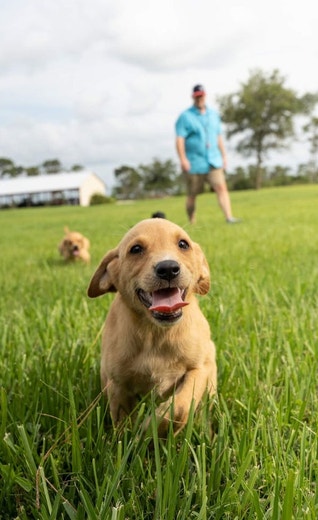
Evaluating Body Condition
To help ensure your dog is maintaining an optimal weight, you should regularly check your dog's body condition to detect changes as early as possible, and ask your veterinarian about your dog's body condition score during your dog's routine wellness visits.
HOW TO CHECK BODY CONDITION
Assessing the body condition score of your pet has two components: a visual aspect (looking at your pet’s body shape both from above and from the side) and palpation or feel (running your hands over the sides of the dog’s rib cage down to their sternum or chest bone).
KEY INDICATORS
For a dog at an ideal weight, the ribs can be easily felt with minimal fat overlying them, their waistline is clearly seen from above, and an abdominal tuck is seen in the side view.
A dog is likely underweight if their ribs are easily felt without any fat covering and some of their bones (eg., ribs and pelvis) can be seen.
A dog is likely overweight if their ribs are difficult to feel through overlying fat, their waistline is not well defined, or an abdominal tuck is not obvious in the side view.
WHY YOUR DOG MAY BE OVERWEIGHT
In short, your dog is likely eating more calories than he burns. Performance dogs burn more calories during competition or high workload and less during periods of lower activity.
MANAGING NUTRITION
If you are concerned that your dog is underweight or overweight, consult your veterinarian. Their assessment may include an evaluation of your dog’s nutrition. Off-season management for performance dogs may require adjustments to feeding schedules or switching to a less energy-concentrated product.




